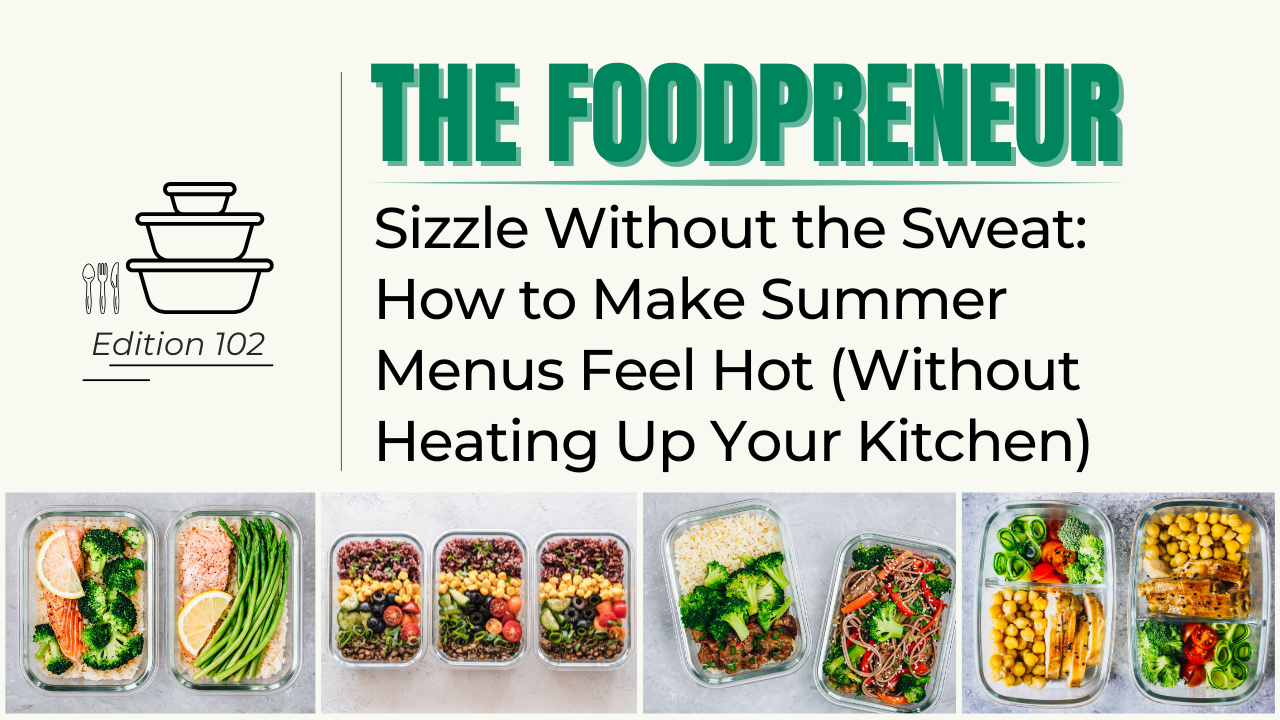

More than ever, standing out in the heat-and-eat meal delivery industry means continuously up-leveling all aspects of your customer experience – including packaging.
For owners of heat-and-eat meal delivery services, innovative packaging solutions are pivotal in elevating the customer experience, maintaining food quality, and enhancing sustainability efforts. Here’s a dive into the latest packaging innovations that could transform your meal delivery business.
One of the most exciting advancements in food delivery is the integration of smart technology into packaging. This innovation isn’t just about keeping food fresh. It’s about creating interactive experiences that engage and inform the consumer in new ways.
Imagine packaging that changes color to indicate that a meal has reached its optimal heating temperature or tags that give customers a precise countdown to when a meal should be consumed. Such features not only add a layer of excitement but also increase functionality, enhancing the user experience. Smart labels can further enhance traceability, allowing the business and customer to track a meal’s journey and ensure its integrity upon arrival, promoting confidence and satisfaction.
As consumer awareness of environmental issues grows, the demand for sustainable packaging solutions has never been higher. Heat-and-eat meal delivery services are uniquely positioned to lead the charge by adopting functional and kind materials to the planet. Companies increasingly turn to biodegradable, compostable, or even edible packaging made from natural materials such as seaweed, cornstarch, and sugarcane. These innovative materials significantly reduce the carbon footprint and maintain the integrity of meals during transit. By choosing sustainable options, businesses demonstrate their commitment to environmental stewardship while meeting consumer expectations for eco-friendly practices.
Effective thermal insulation is critical for heat-and-eat meals, ensuring that food stays safe and retains its quality from kitchen to doorstep. Innovations in insulation materials are revolutionizing how meals are kept at ideal temperatures for extended periods. For example, wool-insulated shipping liners present a sustainable alternative to styrofoam, offering superior thermal regulation. These liners are effective in maintaining temperature and benefit the environment as they are compostable at the end of their life cycle. This shift towards eco-friendly options is essential for sustainability in the food delivery industry.
Flexibility in packaging is vital for meal delivery services that offer a variety of meal sizes and combinations. The latest trend is towards customizable and modular packaging systems that can adapt to different meal types and quantities with minimal waste. These systems often utilize clever design features like foldable inserts or adjustable compartments that secure the meals during transport and minimize material use.
This adaptability not only enhances the customer experience by ensuring the freshness and integrity of meals but also supports environmental goals by reducing unnecessary packaging. Modular designs also streamline logistics and storage requirements, making them a smart choice for businesses looking to optimize operations and customer satisfaction.
Tamper-evident packaging features are essential, where food safety and security are paramount. These include seals or labels that break if interfered with, offering consumers peace of mind about their meals’ untouched status. Additionally, innovations such as self-cooling or self-heating packages enhance convenience by enabling consumers to heat meals directly in their packaging without extra dishes. These packaging advancements safeguard the product and promote a user-friendly experience by integrating technology that simplifies meal preparation. This is especially appealing for busy customers – no doubt, your audience – who value convenience. Beyond that, these features reassure customers about the integrity and safety of their food, making them essential components of modern meal delivery services.
Beyond physical protection and food safety, modern packaging is taking customer engagement to the next level. QR codes on packages can link to web pages that show nutritional information, reheating instructions, or even video messages from the chef. This digital interaction enriches the customer’s experience and bridges the gap between food producers and consumers, fostering a sense of community and transparency.
When it comes to packaging design, less is often more. Minimalist packaging designs are more popular than ever, appealing to consumers’ desire for simplicity and elegance. These designs typically feature clean lines, limited color palettes, and clear branding. Not only does this make the packaging more attractive, but it also aligns with the sustainability ethos by using less ink and fewer materials.
The streamlined approach to design minimizes visual clutter and focuses on the essentials, enhancing the product’s appeal while emphasizing eco-friendly practices. This attracts environmentally conscious consumers and communicates a brand’s commitment to reducing its environmental impact. Such minimalist packaging also tends to be more efficient to produce and can reduce shipping costs due to lighter weights and less material usage.
Takeaway
For owners of heat-and-eat meal delivery services, staying ahead of the curve in packaging innovation isn’t just an option—it’s essential. By embracing these new technologies and materials, businesses can enhance the customer experience, meet sustainability goals, and ensure the highest food safety and quality standards.
As the industry evolves, the role of innovative packaging will only grow, making it an exciting time to reimagine how meals are delivered and enjoyed. Whether you’re just starting out or looking to upgrade your current offerings, these packaging innovations are set to profoundly impact your operations and customer satisfaction.
